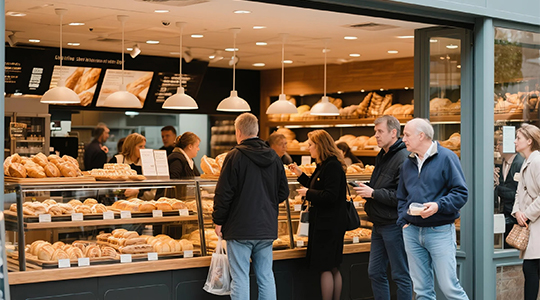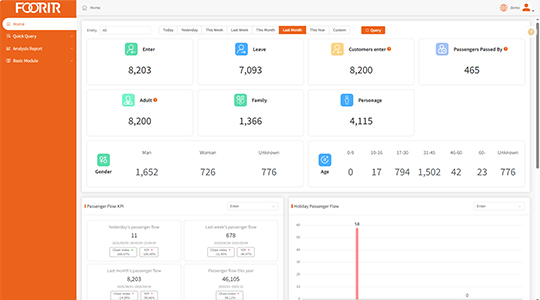Alright folks, let me tell you about this little project I cooked up recently – people counting for businesses. Sounds fancy, right? But trust me, it’s simpler than you think, and the results can be pretty darn useful.
So, the initial spark? I was chatting with a friend who owns a small bakery. She was complaining about how inconsistent foot traffic was making it hard to staff properly and manage inventory. One day she’s swamped, the next it’s crickets. Lightbulb moment! People counting!

First thing’s first, I needed a way to actually count the people. I wasn’t about to stand there with a clicker all day. Initially, I thought about those fancy overhead cameras you see in big stores, but those are pricey and honestly, overkill for a small bakery. I landed on using a Raspberry Pi with a camera module. Cheap, cheerful, and surprisingly powerful.
Next hurdle: the software. I’m no AI guru, but thankfully, there are pre-trained models out there that can detect people in images and videos. I played around with a few open-source libraries – OpenCV was my best friend here. I spent a good chunk of time tweaking the settings to get the accuracy just right. False positives (thinking a coat rack is a person) were a real pain early on!
The process went something like this:
- Camera Setup: Mount the camera above the entrance, pointing down. Angle is key to avoid distortion.
- Image Processing: The Raspberry Pi grabs frames from the camera.
- Object Detection: The software identifies potential people in each frame.
- Tracking: This is where it gets a little clever. The software tracks each “person” as they move across the frame. This helps avoid double-counting if someone pauses near the entrance.
- Counting: The system increments a counter when a tracked “person” crosses a virtual line that I drew in the image (basically, the doorway).
Of course, there were hiccups. Lighting changes threw the system off sometimes, leading to inaccurate counts. I added some code to dynamically adjust the sensitivity based on ambient light. Another issue was occlusion – when people walked too close together, the system would sometimes see them as one person. Couldn’t completely fix that, but I improved it by tweaking the tracking algorithm.
Once I had a working prototype, I needed to display the data in a useful way. I didn’t want my friend glued to a monitor all day. I set up a simple web server on the Raspberry Pi that displayed the current count, along with a graph of foot traffic over the past few hours. She could access it from her phone or computer.

After a week of testing, the results were pretty promising. My friend started using the data to schedule staff more effectively and adjust her baking quantities. She even noticed that certain days of the week were consistently busier than others, which helped her plan promotions and specials.
This whole project was a fun learning experience. I learned a ton about image processing, object detection, and the power of relatively simple technology to solve real-world problems. And hey, I helped a local business owner optimize her operations. Not a bad way to spend a few weekends!
Key takeaways? Don’t be afraid to experiment. Start small, iterate, and learn from your mistakes. And remember, even “complex” problems can often be tackled with surprisingly simple solutions.
